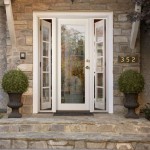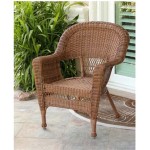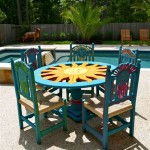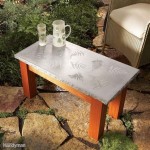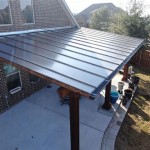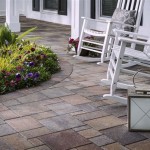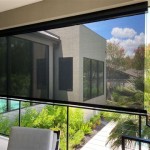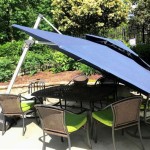Creating a Perfect Patio with Awning Ideas for Beginners
An outdoor patio serves as an extension of the home, offering a space for relaxation, entertainment, and connection with nature. Maximizing the utility and comfort of a patio often requires careful consideration of shade and protection from the elements. Awnings provide an effective solution, offering both functional benefits and aesthetic enhancements. For beginners contemplating the addition of an awning, understanding the various options, installation considerations, and design principles is crucial for creating a perfect patio space.
Understanding the Different Types of Awnings
Awnings are not a one-size-fits-all solution. The market offers a diverse range of awning types, each with unique features, advantages, and disadvantages. Differentiating between these types is the first step in selecting the ideal awning for a specific patio.
Retractable Awnings: These awnings offer the flexibility to extend or retract the fabric as needed. This adaptability allows users to adjust the amount of shade and sunlight received on the patio, depending on the weather conditions or personal preference. Retractable awnings typically consist of a fabric canopy supported by a frame that can be mechanically extended or retracted. The mechanism can be either manual, utilizing a hand crank, or motorized, operated by a remote control or wall switch. Motorized awnings often incorporate sensors that automatically retract the awning during high winds or heavy rain, preventing damage. The fabric used in retractable awnings is typically a durable, water-resistant material like acrylic or polyester.
Fixed Awnings: Unlike retractable awnings, fixed awnings remain permanently extended, providing constant shade and protection. These awnings are typically constructed from more durable materials, such as metal or fiberglass, and are designed to withstand prolonged exposure to the elements. Fixed awnings can be customized in various shapes and sizes to complement the architectural style of the house. While they offer consistent shading, they lack the flexibility of retractable awnings, meaning the level of sunlight cannot be adjusted.
Window Awnings: Primarily designed to shade windows, these awnings can also be incorporated into a patio design, particularly for patios adjacent to the house. Window awnings help reduce solar heat gain inside the house, contributing to energy efficiency. They are typically smaller than patio awnings and come in both fixed and retractable styles. The materials used in window awnings are similar to those used in patio awnings, including acrylic, canvas, and metal.
Freestanding Awnings: These awnings are not attached to the house and can be placed anywhere on the patio. Freestanding awnings often consist of a sturdy frame supporting a fabric canopy, providing a shaded area independent of the building structure. These are suitable for larger patios or areas where attaching an awning to the house is not feasible. Some freestanding awnings feature adjustable canopies, allowing for customization of the shade level.
Pergolas with Retractable Canopies: Although technically pergolas, these structures can be equipped with retractable fabric canopies, offering a hybrid solution that combines the architectural appeal of a pergola with the functionality of an awning. The retractable canopy can be extended to provide shade or retracted to allow sunlight to filter through. Pergolas with retractable canopies offer a sophisticated and versatile option for patio shading.
Key Considerations for Choosing an Awning
Selecting the right awning involves a thoughtful evaluation of several critical factors. Ignoring these considerations can result in an awning that does not meet the specific needs of the patio or the aesthetic preferences of the homeowner.
Patio Size and Orientation: The size of the patio directly dictates the size of the awning required. A larger patio necessitates a larger awning to provide adequate shade. The orientation of the patio relative to the sun's path is also a crucial consideration. A patio that faces south or west will receive more direct sunlight and heat, requiring a more substantial awning or choosing darker colors of material to block more sunlight. Conversely, a patio that faces north or east may require less shading, allowing for a smaller awning or lighter-colored material.
Climate and Weather Conditions: The local climate plays a significant role in determining the type and materials of the awning. In areas with frequent strong winds, a retractable awning with wind sensors is recommended to prevent damage. In regions with heavy rainfall, a water-resistant fabric is essential. Coastal areas may require awnings made from corrosion-resistant materials to withstand the effects of salt air. Considering the prevailing weather conditions ensures the awning will withstand the elements and provide long-lasting performance.
Budget: Awnings vary significantly in price, depending on the type, size, materials, and features. Establishing a budget beforehand helps narrow down the options and prevents overspending. Retractable awnings tend to be more expensive than fixed awnings, particularly those with motorized operation and advanced features. High-quality fabrics and durable frames also contribute to a higher price point. It is important to factor in installation costs, which can vary depending on the complexity of the installation and the need for professional assistance.
Aesthetic Style: The awning should complement the architectural style of the house and the overall aesthetic of the patio. Awnings are available in a wide range of colors, patterns, and styles, allowing for customization to match the existing décor. Consider the color of the house, the landscaping, and the furniture when selecting an awning. A well-chosen awning can enhance the visual appeal of the patio and create a cohesive outdoor living space.
Maintenance Requirements: Different types of awnings require varying levels of maintenance. Retractable awnings need periodic cleaning to remove dirt and debris. The retraction mechanism may also require occasional lubrication. Fixed awnings typically require less maintenance but may need occasional cleaning to prevent mildew or algae growth. Using a mild soap and water solution is generally sufficient for cleaning awning fabrics. Regular inspection and maintenance can prolong the lifespan of the awning and ensure optimal performance.
Installation and Design Tips for Awnings
Proper installation and thoughtful design are essential for maximizing the benefits of an awning. A poorly installed awning can be ineffective, unattractive, and even dangerous. Careful planning and attention to detail are crucial for achieving a successful outcome.
Professional Installation vs. DIY: Depending on the type of awning and the individual's skill level, installation can be either a DIY project or require professional assistance. Fixed awnings and smaller retractable awnings can often be installed by homeowners with basic carpentry skills. However, larger retractable awnings, particularly those with motorized operation, are best installed by professionals. Professional installation ensures the awning is properly secured, aligned, and functioning correctly.
Fabric Selection and Color: The fabric of the awning plays a significant role in its performance and appearance. Acrylic fabrics are known for their durability, water resistance, and fade resistance. Polyester fabrics are a more affordable option but may not be as durable as acrylic. Canvas fabrics offer a traditional look and feel but require more maintenance. The color of the fabric affects the amount of light and heat that is blocked. Darker colors provide better shading but can absorb more heat, while lighter colors reflect more light but may not provide as much shade. Consider the climate and the desired level of shading when selecting the fabric and color.
Awning Height and Projection: The height of the awning should be sufficient to provide adequate headroom and prevent obstructions. The projection, or the distance the awning extends from the house, determines the amount of shade it provides. A larger projection provides more shade but may be more susceptible to wind damage. Consider the height of the patio door and the desired area of coverage when determining the awning height and projection.
Lighting and Accessories: Incorporating lighting into the awning design can enhance the patio's functionality and ambiance. Recessed lighting, string lights, or spotlights can be added to the awning frame to provide illumination for evening use. Accessories such as wind sensors, sun sensors, and remote controls can further enhance the convenience and usability of the awning. Consider adding these features to customize the awning to specific needs and preferences.
Integrating with Landscaping: The awning should be integrated seamlessly with the surrounding landscaping. Consider the placement of trees, shrubs, and other plants when planning the awning installation. A well-designed awning can enhance the beauty of the landscaping and create a harmonious outdoor living space. Avoid placing plants too close to the awning, as they may obstruct the view or damage the fabric.
By understanding the different types of awnings, considering the key factors in selecting an awning, and following the installation and design tips, beginners can create a perfect patio that provides shade, protection, and enhanced aesthetic appeal. A well-chosen and properly installed awning can transform a patio into a comfortable and inviting outdoor living space.

25 Best Patio Cover Ideas Covered Designs

16 Diy Patio Cover Ideas To Transform Your Outdoor Space The Garden Glove

Six Garden Canopy Ideas For Big And Small Gardens Bbc Gardeners World

How To Build A Diy Covered Patio

How To Build A Pergola With Ease The Simple Secrets Success

10 Shade Ideas For Backyards Patios Extra Space Storage

3 Retractable Patio Awning Ideas Helioscreen

50 Deck Ideas With Gazebos Pergolas Buildtuff Usa

6 Best Patio Awning Ideas To Upgrade Your Shade Family Handyman
:max_bytes(150000):strip_icc()/ScreenShot2023-05-22at2.28.51PM-65cad9fc55ed4ffc96ee7f6db8aba25d.png?strip=all)
20 Deck Awning Ideas Perfect For Patio Season
Related Posts

